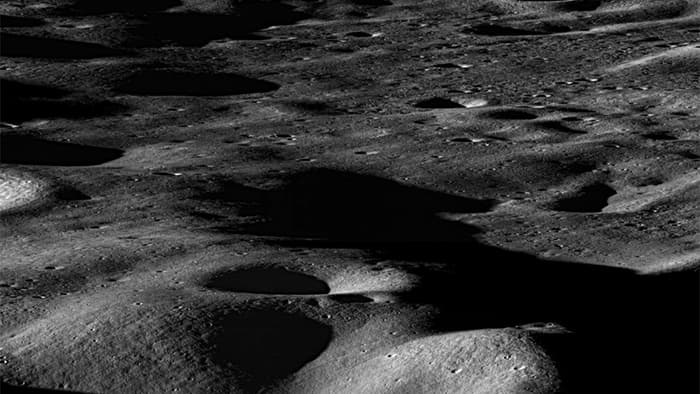A year ago, the twin impacts of NASA’s LCROSS (Lunar Crater Observation and Sensing Satellite) spacecraft and a companion rocket stage into the lunar surface revealed the presence of water on the moon. Now new data uncovered by LCROSS and the Lunar Reconnaissance Orbiter (LRO) has revealed that the lunar soil within shadowy craters is rich in useful materials, and that the moon is chemically active and has a water cycle.
The twin impacts of LCROSS and a companion rocket stage in the moon’s Cabeus crater on October 9, 2009, lifted a plume of material that might not have seen direct sunlight for billions of years nearly 10 miles above the rim of the crater. It was the observations made by instruments aboard LCROSS and LRO of the crater and debris and vapor clouds that revealed the presence of water, mostly in the form of pure water ice grains.
This means that “water ice was somehow delivered to the moon in the past, or chemical processes have been causing ice to accumulate in large quantities,” said Anthony Colaprete, LCROSS project scientist and principal investigator at NASA’s Ames Research Center in Moffett Field, Calif. “Also, the diversity and abundance of certain materials called volatiles in the plume, suggest a variety of sources, like comets and asteroids, and an active water cycle within the lunar shadows.”
Volatiles are compounds that freeze and are trapped in the cold lunar craters and vaporize when warmed by the sun. The suite of LCROSS and LRO instruments determined as much as 20 percent of the material kicked up by the LCROSS impact was volatiles, including methane, ammonia, hydrogen gas, carbon dioxide and carbon monoxide.
Scientists believe the water and mix of volatiles that LCROSS and LRO detected could be the remnants of a comet impact. They say these volatile chemical by-products are also evidence of a cycle through which water ice reacts with lunar soil grains.
After mapping the distribution of hydrogen, the science team concluded the water is not uniformly distributed within the shadowed cold traps, but rather is in pockets, which may also lie outside the shadowed regions.
The proportion of volatiles to water in the lunar soil indicates a process called “cold grain chemistry” is taking place. Scientists also theorize this process could take as long as hundreds of thousands of years and may occur on other frigid, airless bodies, such as asteroids; the moons of Jupiter and Saturn, including Europa and Enceladus; Mars’ moons; interstellar dust grains floating around other stars and the polar regions of Mercury.
The instruments also discovered relatively large amounts of light metals such as sodium, mercury and possibly even silver but it is water that is the most valuable commodity on the moon.
By understanding the processes and environments that determine where water ice will be, how water was delivered to the moon and its active water cycle, future mission planners might be better able to determine which locations will have easily-accessible water. The existence of mostly pure water ice could mean future human explorers won’t have to retrieve the water out of the soil in order to use it for valuable life support resources. In addition, an abundant presence of hydrogen gas, ammonia and methane could be exploited to produce fuel.
The science team’s findings are featured in six papers published in the October 22 issue of Science.
Source: www.gizmag.com
Dear User/Visitor! Please, answer on our questions: tick off one of the positions – your answer will make us able to improve our site and make it more interesting and useful!


